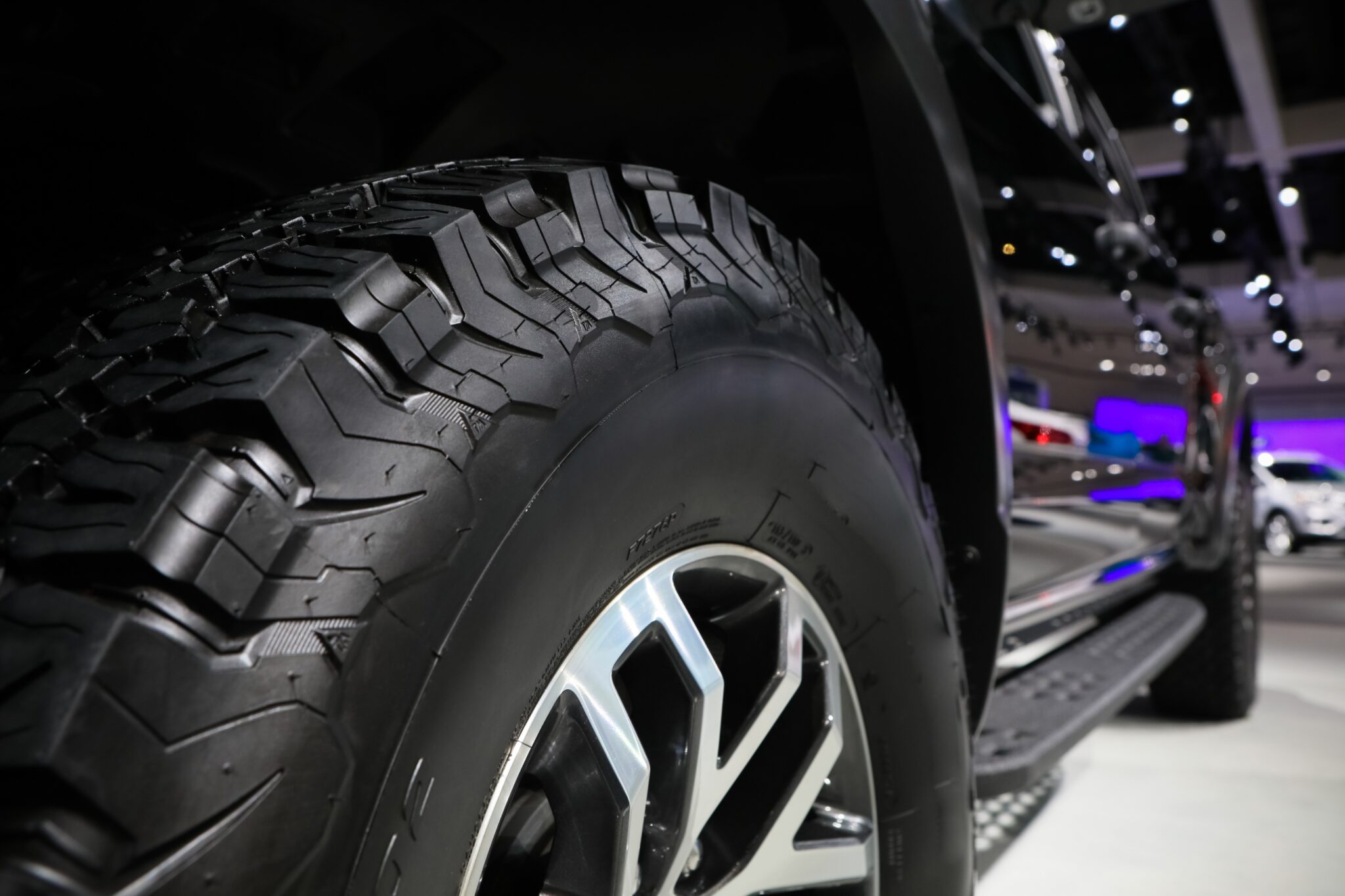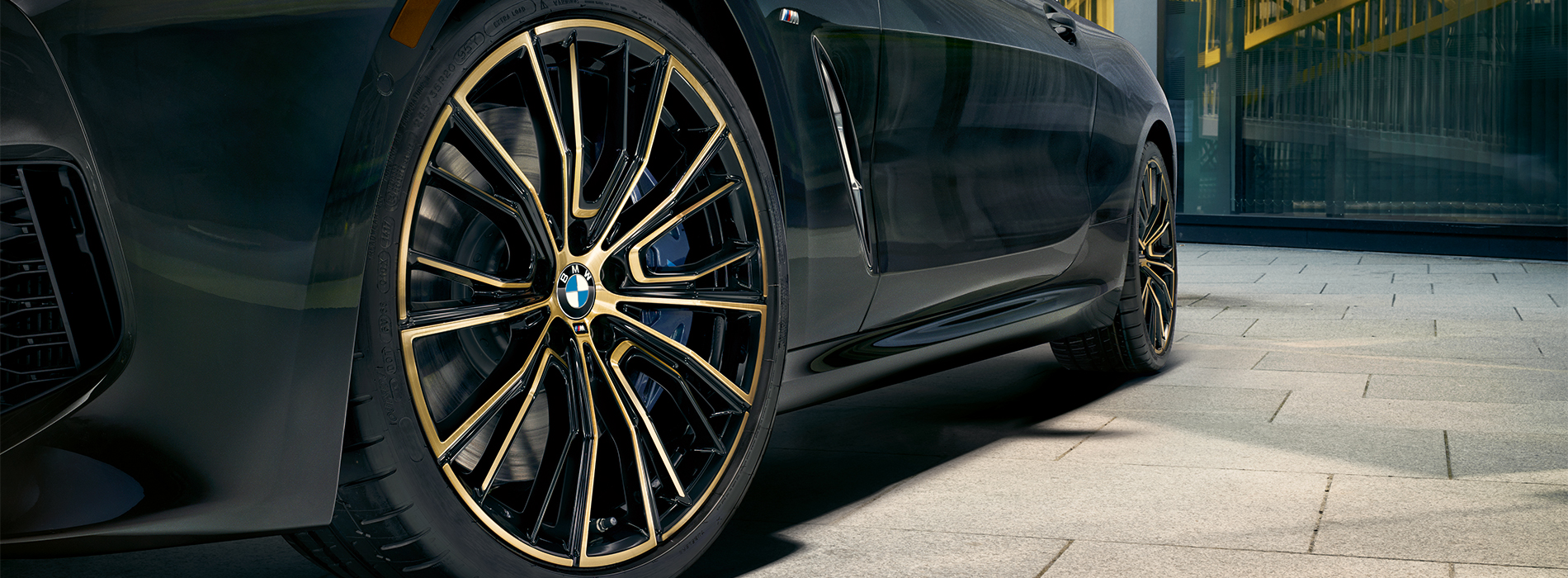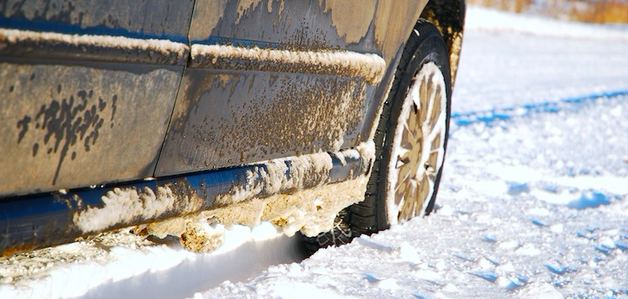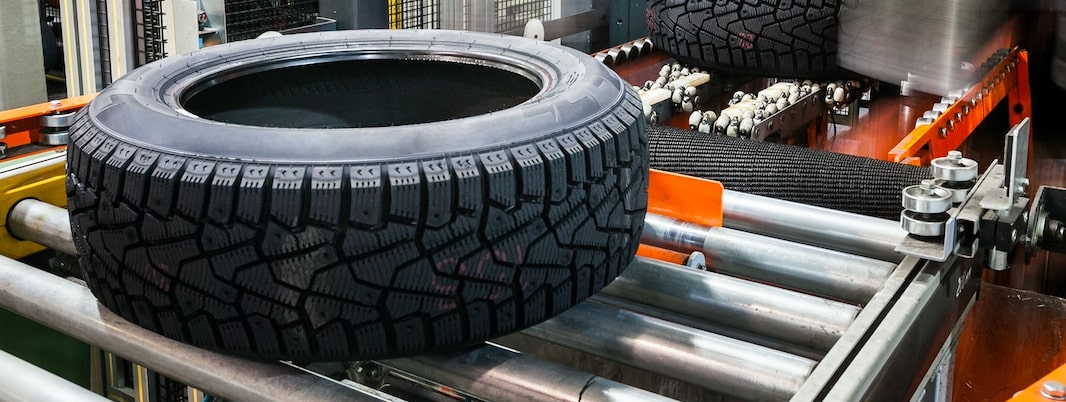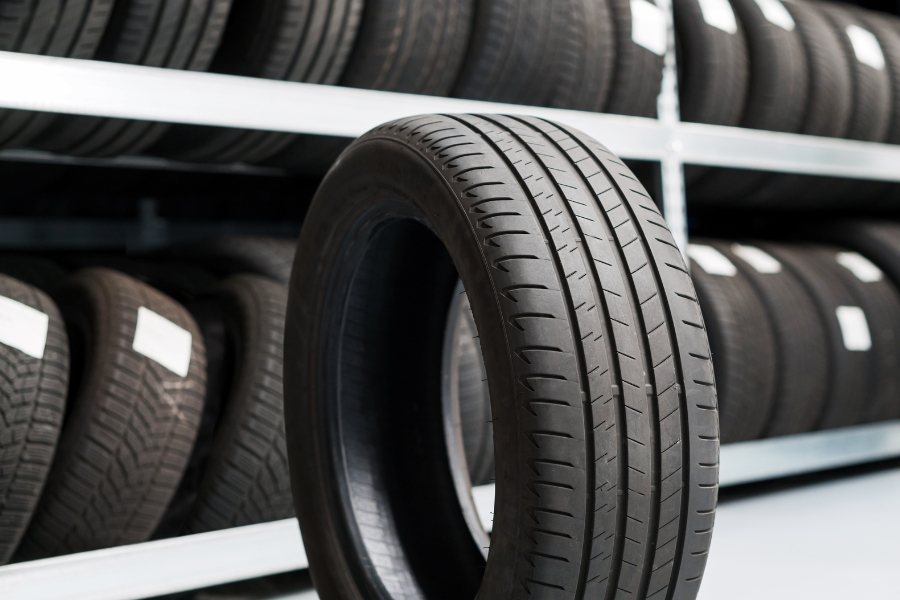Last Updated on April 22, 2024
The Road to Understanding Tire Treads
Tire treads are essential for vehicle safety and performance but are often ignored. This introduction explains tire treads by delving into their fundamental construction, functionality, and importance in everyday driving.
The Basics of Tire Tread
Tire treads are the part of the tire that makes direct contact with the road surface. They are made from a rubber compound that combines natural and synthetic rubbers, carbon black, silica, and other chemical compounds. This blend balances durability, traction, and performance.
Tread Design Elements:
This blog part explores the complex realm of tire tread design. We’ll look at the different aspects of a tire’s tread design, such as grooves, sipes, blocks, and channels. Understanding these design factors is crucial for maximizing the tire’s performance in various driving circumstances.
- Ribs and Blocks: These are the elevated areas of the tread pattern. Ribs go around the tire, and grooves and sipes separate blocks.
- Grooves: These crevices between the ribs or blocks allow water to drain away from the tire and preserve traction on wet roads.
- Sipes: Sipes are small openings in the tread blocks that provide more grip, particularly in wet or slippery situations.
- Tread Depth: New tires usually have a tread depth of 10/32″ to 11/32″. The depth is critical for ensuring proper traction. As the tire wears out, its ability to operate in harsh conditions deteriorates.
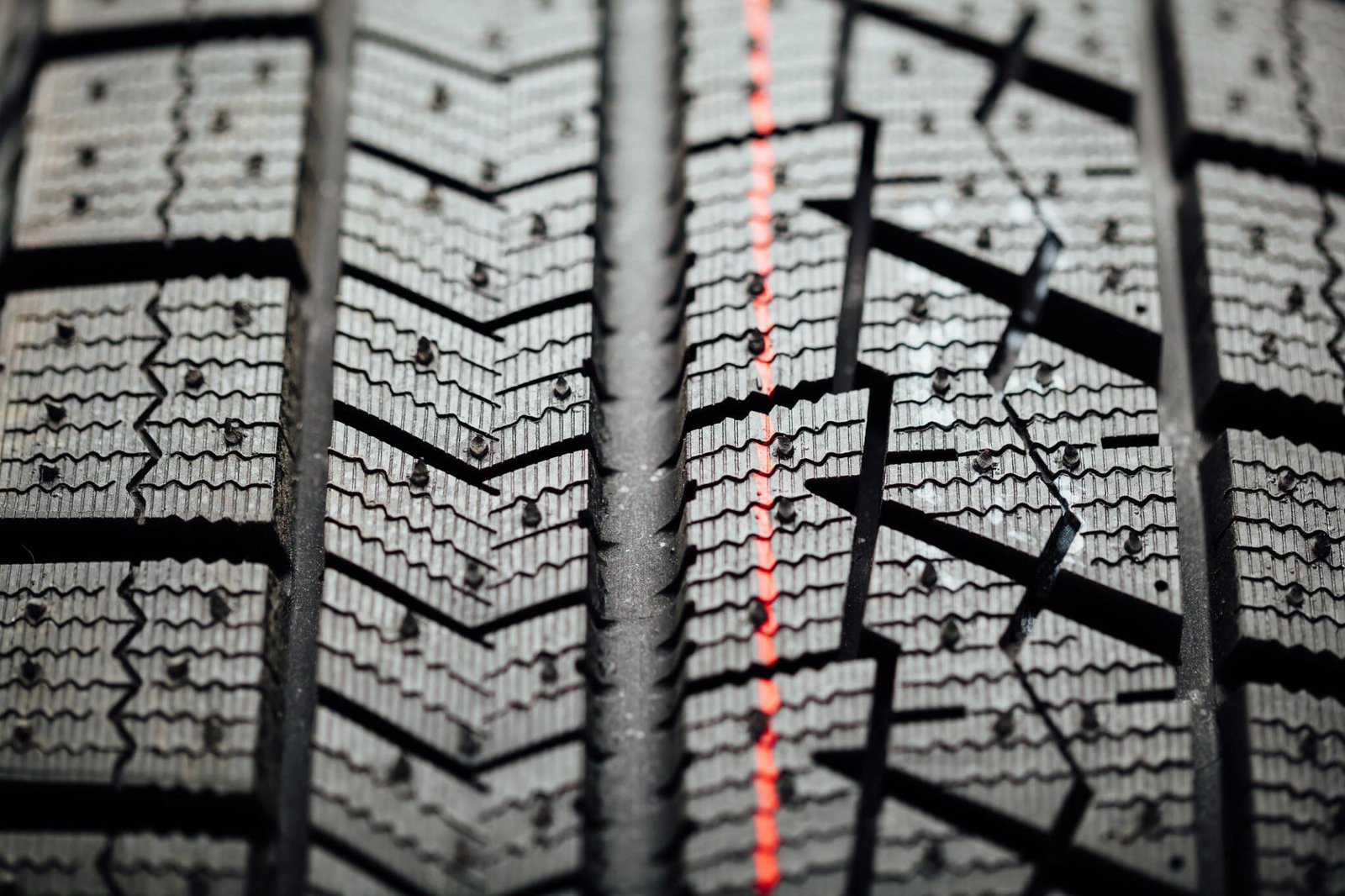
Why Do Tread Patterns Matter?
Tread patterns are essential for traction, handling, and water disposal characteristics. We’ll discuss why selecting the correct tread pattern for your driving needs is critical to road safety and performance.
- Safety in Wet Conditions: Tread patterns are meant to remove water from beneath the tire, lowering the chance of hydroplaning, which occurs when a tire loses touch with the road surface owing to wetness. The grooves and sipes play an essential part in this function.
- Handling and Traction: The tread pattern influences the tire’s grip and handling capabilities. Tires with larger blocks, for example, are better for dry traction, whereas those with more grooves and sipes perform better in wet or snowy situations.
- Noise and Comfort: The tread pattern can affect noise and ride comfort. Some tread designs are proper to reduce road noise, providing a quieter, more comfortable driving experience.
- Fuel Efficiency: A tire’s rolling resistance, partly determined by its tread design, impacts fuel efficiency. Lower rolling resistance means better fuel efficiency, and manufacturers often design treads to minimize energy loss.
- Wear Patterns and Tire Longevity: The tread design can affect how a tire wears over time. Uneven wear can shorten the useful life of a tire, forcing an earlier replacement.
The Anatomy of a Tire Tread
Understanding the design of a tire tread is critical for understanding how tires perform under different conditions. This section discusses the various varieties of tread patterns, the importance of tread depth, and the science behind tread design.
Different Types of Tread Patterns
Tread patterns are not a one-size-fits-all solution; they vary majorly based on the tire’s intended use and the driving conditions it’s designed for. Common tread patterns include:
- Symmetrical Tread Patterns: This is the most frequent variety, with uniform patterns across the tire surface. They strike a nice mix between silence, ride quality, and long tread life. It is appropriate for passenger vehicles in moderate climates.
- Asymmetrical Tread Patterns: These tires have unique tread patterns on the inner and outer edges. The outer edge often has larger tread blocks for improved cornering, and the inner edge features grooves for wet and cold grip. They’re commonly found in sports cars and high-performance vehicles.
- Directional (Unidirectional) Tread Patterns: These are characterized by a ‘V’- shaped pattern designed to rotate in one direction. They are excellent for removing water and reducing the risk of hydroplaning, making them best for wet-weather driving.
- All-Terrain Tread Patterns: With larger tread blocks and more open tread design, all-terrain tires are designed for off-road conditions while still providing acceptable performance on paved roads.
Tread Depth and Its Importance
Tread depth is a crucial safety aspect of a tire. It is measured from the top of the tread rubber to the bottom of the tire’s deepest grooves.
New Tire Tread Depth: New tires typically have a tread depth of 10/32″ to 11/32″.
- Minimum Legal Tread Depth: Most regions have legal minimum tread depths, typically approximately 2/32″. The tires listed below are dangerous and should be changed.
- Safety implications: Proper tread depth is critical for water dispersion, grip, and braking. Reduced tread depth causes longer stopping distances and a greater danger of hydroplaning.
- Checking tread depth: Tread wear indicators (little bars running across the tire grooves) make it simple to determine tread depth. When the tread is flush with these bars, the tire requires replacement.
The Science Behind Tread Design
The tire tread design is a sophisticated engineering feat, balancing multiple factors:
- Material Composition: Treads are made from rubber compounds designed for grip, wear resistance, and durability. Additives like silica improve grip on wet roads.
- Noise Reduction: Tread patterns are intended to minimize noise. This requires complex modeling to determine how air moves through the tire grooves and how the tread blocks interact with the road surface.
- Heat Dispersion: When tires roll, they produce heat. The tread design distributes this heat while retaining the tire’s integrity.
- Hydroplaning Resistance: Effective tread designs direct water away from the tire, lowering the likelihood of hydroplaning. This is when the depth and pattern of grooves and sipes become essential.
- Traction vs. Fuel Efficiency: There’s a trade-off between traction and rolling resistance (which affects fuel efficiency). Treads are designed to find an optimal balance for the tire’s intended use.
Tread Patterns for Different Conditions
Tire treads are designed to operate under any number of driving conditions. This area focuses on tread designs for wet roads, winter conditions, off-road terrains, and high-performance racing and sports cars.
Treads for Wet Roads
When driving on wet roads, the primary concern is preventing hydroplaning and maintaining grip. Tires designed for wet conditions usually feature the following:
- Deep Grooves: These are essential for passing water away from the tire’s surface, reducing the risk of hydroplaning. The grooves effectively distribute water while maintaining contact with the road.
- Sipes: Fine slots in the tread blocks improve grip in wet conditions by adding more biting edges.
- Silica-Enhanced Rubber Compounds: These compounds provide flexibility and grip on wet surfaces.
Snow and Winter Treads
Winter tires are specifically designed to perform in cold, snowy, or icy conditions:
- Deeper Tread Blocks and Grooves: These provide better traction in snow and slush.
- Siping: Winter tires have a higher density of sipes for improved grip on ice.
- Soft Rubber Compounds: These remain pliable at low temperatures, ensuring better contact and grip.
- Snowflake Symbol: Tires meeting specific winter performance criteria are marked with a snowflake symbol.
Off-Road Treads: Navigating Rough Terrains
Off-road tires are built to handle unpaved roads, mud, rocks, and other challenging terrains:
- Tread Blocks: Large, aggressive tread blocks offer the necessary grip in mud and loose terrain.
- Reinforced sidewalls: This feature helps to prevent punctures and damage from rugged terrain.
- Self-Cleaning Design: The tread pattern removes mud and stones while retaining traction.
- Tread Pattern Variation: Tread patterns might differ significantly depending on the off-road condition (rocky, muddy, sandy).
Performance Treads for Racing and Sports Cars
Performance tires for racing and sports cars have unique tread designs for high-speed stability and maximum grip:
- Shallow tread depth enhances the contact patch with the road, improving grip during high-speed maneuvers.
- Asymmetric and directional patterns allow efficient handling and water evacuation at high speeds.
- These compounds are designed to provide grip while withstanding high temperatures caused by rapid speeds.
Tread Wear and Safety Implications
Tire tread wear patterns indicate tire health and are critical for road safety. This article explores how to recognize wear patterns, the connection between tread wear and safety, and guidelines for tire replacement.
Recognizing Tire Wear Patterns
Tire wear patterns reveal a lot about a vehicle’s alignment, suspension system, and tire maintenance. Common wear patterns include:
- Even Wear: Normally, tires should wear evenly across the tread. Even wear indicates proper inflation and wheel alignment.
- Center Wear: Excessive wear in the center tread means over-inflation, leading to less contact with the road and reduced traction.
- Edge Wear: Wear primarily on the edges shows under-inflation, which increases friction and heat and risks tire failure.
- Cupping or Scalloping: These dips or scallop-shaped patterns on the tread surface can indicate suspension problems or an imbalance.
- Feathering: Tires with tread ribs worn lower/smoother on one side may signal alignment issues.
The Link Between Tread Wear and Road Safety
Tire tread wear directly impacts road safety in several ways:
- Traction Loss: Worn tracks weaken grip, particularly in wet weather, increasing the likelihood of an accident.
- Hydroplaning: As tread depth falls, the tire’s capacity to conduct water effectively diminishes, increasing the risk of hydroplaning on wet surfaces.
- Braking Distance: Worn tires may significantly boost braking distance, especially during emergencies.
- Blowouts: Tires that are excessively worn or damaged are more likely to blow out, which can be hazardous at high speeds.
When to Replace Your Tires?
Knowing when to replace tires is essential for maintaining road safety:
- Minimum Tread Depth: The legal minimum tread depth in many regions is 2/32 inches. Tires should be replaced before they reach this limit.
- Tread Wear Indicators: Modern tires have tread wear indicators, such as small bars at the base of the tread grooves. It’s time to replace the tire when the tread wears down to these bars.
- Age of Tires: Even if the tread depth is adequate, tires older than 5-6 years should be inspected regularly, as rubber degrades over time.
- Visible Damage: Any signs of cuts, bulges, or other damage are indicators that the tire needs to be replaced.
Regularly checking tire condition, ensuring proper inflation, and understanding wear patterns can help prevent accidents and ensure optimal tire performance.
Choosing the Right Tread for Your Vehicle
Selecting the proper tire tread for your vehicle ensures safety, performance, and efficiency. This involves understanding your driving needs, considering your vehicle type, and following expert tips for tire shopping.
Understanding Your Driving Needs
Your driving habits and conditions play a pivotal role in determining the proper tire tread:
- Climate and Weather: If you live in a region with heavy rain or snow, look for tires with deep grooves and high-speed density for better traction. A tire with a more complex compound and less aggressive tread may be more suitable for dry climates.
- Driving Style: Rough drivers might prefer tires with higher grip and responsiveness, usually in performance treads. More simple drivers might look for the comfort and durability of touring tires.
- Road Conditions: Frequent off-road or rugged terrain driving necessitates all-terrain tires with aggressive tread patterns. For mostly city or highway driving, standard all-season tires might be sufficient.
The Role of Vehicle Type in Tread Selection
Different vehicle types require specific tire characteristics:
- Passenger Cars: They often use all-season tires with modest tread depth and patterns designed for a smooth, quiet ride and decent overall performance.
- SUVs and trucks: If driven off-road, they may benefit from all-terrain or mud-terrain tires. Otherwise, highway-terrain tires strike a compromise between performance and comfort.
- Sports Cars: Performance tires with wider tread blocks, shallower grooves, and softer rubber formulations provide superior road grip and handling.
- Electric and Hybrid Vehicles: Due to their weight and torque characteristics, these vehicles may require tires with low rolling resistance for better energy efficiency.
Expert Tips for Tire Shopping
When shopping for new tires, consider the following expert recommendations:
- Check Tire Ratings: Look for the Uniform Tire Quality Grading (UTQG) rating that gives insight into treadwear, traction, and temperature resistance.
- Read Reviews: Research reviews and ratings from other consumers and professional testing organizations.
- Consult Professionals: Talk to tire professionals who can provide insights based on your specific car model and driving habits.
- Price vs. Quality: While it is tempting to go for cheaper options, investing in quality tires can save money in the long run through more extended wear and better fuel efficiency.
- Match Tires: Ensure all tires on your vehicle are of the same type, size, and tread pattern for consistent performance and handling.
- Consider Future Conditions: Consider changing conditions, like moving to a new area with different weather or road conditions.
Innovations in Tread Technology
The tire industry is constantly evolving, fueled by technological improvements and an increasing emphasis on sustainability. Innovations in tread technology are changing the future of tires, with a focus on performance and sustainability.
The Future of Tread Patterns
Future tread patterns are being designed with a focus on enhanced performance, safety, and adaptability:
- Intelligent Treads: Advancements in revolutionary tire technology include treads that can change their patterns depending on driving circumstances. A tire, for example, can change its tread pattern utilizing micro-pumps and fluid channels to improve traction in wet or dry circumstances.
- 3D Printed Tires: Advanced 3D printing technology enables more precise tread pattern creation and manufacturing of previously unachievable treads. This could result in highly personalized tire designs for specific conditions or preferences.
- Noise Reduction: Reducing tire noise is increasingly vital as electric vehicles become more common. Future tread designs should focus more on minimizing noise to improve the driving experience.
- Improved Durability: Research is ongoing into tread materials and patterns that wear down more slowly, extending tire life and reducing the frequency of tire replacement.
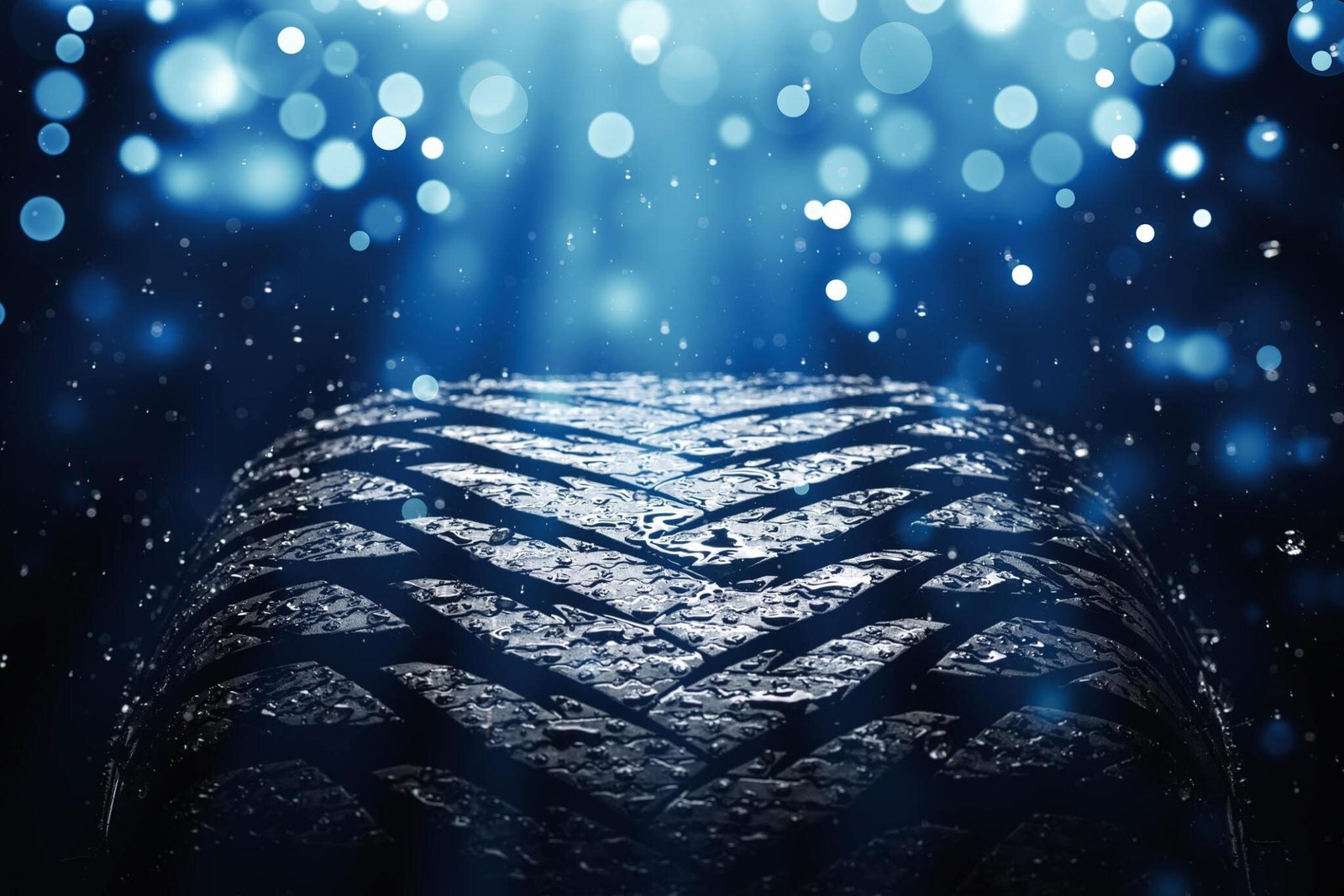
Eco-Friendly and Sustainable Treads
Sustainability is becoming a key consideration in tread technology:
- Sustainable Materials: The shift towards more eco-friendly materials is significant. Companies are exploring using natural rubbers, bio-based materials, and recycled plastics in tread production.
- Lower Rolling Resistance: Treads that offer lower rolling resistance improve fuel efficiency and reduce emissions. These designs are essential for electric and hybrid vehicles, where efficiency is crucial.
- Retread Tires: The concept of retreading, which involves repairing old tire casings with fresh treads, is being refined. This strategy dramatically minimizes waste and resource consumption.
- Biodegradable Tires: Research is currently underway toward totally biodegradable treads, which would significantly reduce the environmental impact of discarded tires.
Conclusion & Recommendation
As we complete this comprehensive reference to tire treads, it is evident that the importance of tread patterns in ensuring road safety and enhancing vehicle performance cannot be understated. Tread patterns are more than just a design feature of your tires; they are crucial components that affect your driving experience, safety, and vehicle efficiency.
- Treads and Safety: Tire treads’ primary role is to provide the necessary grip and traction on various surfaces. Whether on wet roads, snowy conditions, or rough terrain, the correct tread pattern ensures your vehicle remains stable and responsive. In hazardous conditions, such as heavy rain or icy roads, the tread design prevents accidents by reducing the risk of skidding or hydroplaning.
- Performance Considerations: Beyond safety, tire treads significantly affect your vehicle’s handling and performance. From the quiet, comfortable ride of touring tires to the enhanced grip and speed of performance tires, the correct tread design can maximize your vehicle’s capabilities.
- Choosing the Right Tires: Understanding your usual driving conditions and what you anticipate from your tires regarding durability, efficiency, and performance are critical factors in selecting the right tires for your car. A tire tread is designed to meet your demands, whether negotiating city streets, going off-road, or enjoying the excitement of high-speed driving.
- Sustainability and innovation: As tread technology advances, future tire designs promise better performance and sustainability. From eco-friendly materials to intelligent tread patterns, these technologies are poised to change our perceptions of tire technology.
Make the Right Choice with Tires Easy
As you consider your tire options, remember that choosing the correct tread pattern is crucial for ensuring your safety and enhancing your driving experience. At Tires-Easy, we understand the importance of finding the perfect tire for your needs. Our wide selection caters to all types of vehicles and driving conditions, ensuring you can find the right match for your specific requirements.
Whether you’re looking for durability, performance, or eco-friendly options, our easy-to-navigate website and expert customer service team are here to guide you through the selection process. With our extensive range of brands and types, you will find the tire that meets and exceeds your expectations.
Take the first step towards safer and more efficient driving. Visit Tires-Easy.com and find the perfect tires for your vehicle today.
FAQs
What do different tread patterns mean?
Different tread patterns are developed for specific driving conditions. Symmetrical treads provide balanced performance, asymmetrical impressions are excellent for variable road conditions, directional tracks function well in wet situations, and off-road prints are appropriate for rugged terrains.
How do you read a tire tread pattern?
Reading a tire tread pattern involves examining the shape and arrangement of grooves and blocks. Grooves channel water away, while unions and sipes provide grip. The pattern’s directionality also indicates if the tire is designed for water evacuation or high-speed stability.
What is the primary function of the tread pattern on tires?
The primary function of tire tread patterns is to provide grip and traction on various surfaces, channel water away to prevent hydroplaning and contribute to the tire’s overall performance in different driving conditions.
What is the importance of tires and their tread?
Tire treads are essential for ensuring safety and proper vehicle performance. They provide necessary grip, affect handling, influence fuel efficiency, and play a vital role in safe driving under different road and weather conditions.
Is it OK to have tires with different tread patterns?
It’s not recommended to have tires with different tread patterns, as this can lead to uneven handling and traction, affecting the vehicle’s stability and safety, especially in adverse conditions.
Can I mix different tire tread patterns?
Mixing different tire tread patterns is generally not advised. It can result in uneven wear, reduced handling, and potentially unsafe driving conditions. Using the same tread patterns on all tires would be best for performance and safety.
What are the four types of tire treads?
The four main types of tire treads are symmetrical, asymmetrical, directional, and off-road. Each class is designed for specific driving needs, from general use and wet road conditions to high-performance and rugged terrains.
Which tire tread pattern is best?
Your driving conditions and requirements determine the most appropriate tire tread pattern. Symmetrical treads are suitable for general use, asymmetrical treads for various applications, directional treads for wet roads, and off-road treads for rough terrains. Choose according to your most frequent driving environment.




